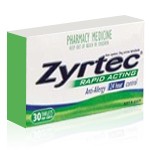Angioedema (Allergic Edema): A Comprehensive Overview


Angioedema, also known as allergic edema or angioneurotic edema, is a sudden, pronounced swelling of the deeper layers of the skin and mucous membranes. It most commonly affects the face, lips, tongue, throat, and around the eyes, although it can also occur on the hands, feet, and even in the gastrointestinal tract or genitals. This condition can arise from various causes, ranging from allergic reactions to hereditary factors, and its management depends heavily on the underlying trigger and severity of the swelling.
What Is Angioedema?
Angioedema refers to localized and often transient swelling that develops as a result of fluid accumulation in the deeper dermis and subcutaneous tissues. It occurs when blood vessels leak fluid into surrounding tissues, typically as part of an immune or inflammatory response. The swelling can be painful or itchy and may be accompanied by redness or a burning sensation, although it often develops without hives. In many cases, the swelling resolves on its own within 24 to 72 hours, but in others, especially when the airway is involved, it may be life-threatening and require immediate medical attention.
There are several types of angioedema, including allergic, hereditary, drug-induced, and idiopathic. Allergic angioedema is one of the most common forms and is typically associated with exposure to allergens such as certain foods, medications, insect stings, or environmental triggers.
What Causes Angioedema?
The underlying mechanism of angioedema involves the release of inflammatory mediators such as histamine or bradykinin. These substances increase the permeability of blood vessels, allowing plasma to leak into surrounding tissues, leading to the characteristic swelling.
In allergic angioedema, the process is driven by an overactive immune response. Upon exposure to an allergen, the immune system releases histamine and other chemicals, leading to rapid swelling. This form is commonly associated with allergens such as nuts, shellfish, eggs, penicillin, and non-steroidal anti-inflammatory drugs (NSAIDs).
Hereditary angioedema (HAE), on the other hand, is a rare genetic disorder caused by a deficiency or dysfunction of the C1 esterase inhibitor, a protein that helps regulate inflammation. In HAE, episodes are not caused by allergens or histamine release but by excessive bradykinin activity.
Another notable cause is medication-induced angioedema, most frequently associated with angiotensin-converting enzyme (ACE) inhibitors used in the treatment of hypertension. This type of swelling is usually bradykinin-mediated and unresponsive to standard allergy medications like antihistamines or corticosteroids.
What Is Allergy-Related Edema?
Allergy-related edema is a subtype of angioedema that occurs as part of an allergic reaction. It is typically histamine-mediated and often coexists with urticaria (hives). This type of edema can develop rapidly after exposure to an allergen and is sometimes accompanied by other allergic symptoms such as sneezing, nasal congestion, wheezing, or difficulty breathing.
In many cases, allergy-related edema is mild and self-limiting. However, in more severe cases, especially when the swelling involves the throat or larynx, it can compromise the airway and become a medical emergency. Prompt administration of antihistamines and, in some cases, epinephrine, is crucial.
Angioedema vs. Anaphylaxis: What Is the Difference?
While angioedema and anaphylaxis may share similar triggers and can occur simultaneously, they are distinct clinical entities with different characteristics and treatment priorities.
Angioedema typically involves swelling of localized areas and may or may not be accompanied by other allergic symptoms. It often resolves on its own or responds well to antihistamines. In contrast, anaphylaxis is a systemic, rapid-onset allergic reaction that affects multiple body systems. It can include symptoms such as low blood pressure, difficulty breathing, wheezing, rapid heartbeat, dizziness, gastrointestinal distress, and loss of consciousness.
A critical distinction is that anaphylaxis always requires emergency intervention, usually with intramuscular epinephrine, while angioedema alone, particularly when mild and not affecting the airway, may not. However, when angioedema involves the tongue, throat, or larynx, it can quickly escalate into a life-threatening condition similar to anaphylaxis, necessitating urgent treatment.
How to Reduce Angioedema (Swelling)
The management of angioedema depends on its cause and severity. In acute allergic angioedema, the first line of treatment is usually oral or injectable antihistamines, which block the effects of histamine. In some cases, corticosteroids are added to reduce inflammation more broadly. If the reaction is severe or involves the airway, epinephrine may be required.
Non-pharmacological approaches are also important. Identifying and avoiding known allergens is a key preventive measure. For people with food or drug allergies, wearing a medical alert bracelet and carrying emergency medications like epinephrine auto-injectors can be lifesaving.
In hereditary angioedema, treatment involves therapies that target bradykinin production or function. These may include C1 esterase inhibitor concentrates, bradykinin receptor antagonists, or kallikrein inhibitors. Because histamine is not involved, standard allergy medications like antihistamines or steroids are generally ineffective in hereditary cases.
For recurrent or idiopathic angioedema (with no known cause), long-term management might include antihistamines at higher-than-standard doses. In rare cases, immunomodulatory therapy may be considered.
Cold compresses can help relieve discomfort and reduce swelling in minor cases. Hydration and rest may also assist in faster recovery.
The Role of Zyrtec in Treating Angioedema
Zyrtec, known generically as cetirizine, is a second-generation antihistamine that is frequently used in the treatment of allergic conditions, including allergic angioedema. It works by selectively inhibiting peripheral histamine H1 receptors, thereby reducing the effects of histamine released during allergic reactions. Cetirizine has the advantage of being non-sedating, allowing for daytime use without significant drowsiness.
In cases of mild to moderate allergic angioedema, Zyrtec can be very effective in relieving symptoms such as swelling, itching, and redness. It is often prescribed for both acute attacks and preventive treatment in individuals with chronic or recurrent episodes.
One of the key benefits of Zyrtec is its relatively rapid onset of action, with effects typically beginning within an hour of ingestion. This makes it a practical choice for managing flare-ups at home. In some cases, especially when symptoms persist or worsen, it may be used in combination with other antihistamines (such as ranitidine) or corticosteroids to enhance effectiveness.
While Zyrtec is effective for histamine-mediated angioedema, it is not useful for bradykinin-mediated forms such as hereditary angioedema or ACE inhibitor-induced angioedema. Therefore, proper diagnosis and classification of the type of angioedema are essential before initiating treatment.
Zyrtec is generally well-tolerated, though mild side effects such as dry mouth, fatigue, or headache may occur. It is available over the counter in many countries, making it easily accessible for individuals who experience episodic angioedema related to allergies.
Conclusion
Angioedema, or allergic edema, represents a multifaceted condition that can range from a benign nuisance to a medical emergency. It involves swelling due to fluid leakage into the deep layers of the skin and mucosa, usually triggered by immune or inflammatory responses. Distinguishing between allergy-related and non-allergic forms, such as hereditary or drug-induced angioedema, is crucial for effective management.
Allergic angioedema, the most common variant, often responds well to antihistamines like Zyrtec, which can help control the histamine-driven swelling and discomfort. However, in more serious cases or when the airway is involved, emergency intervention with epinephrine may be necessary. Non-allergic types require more specialized treatment approaches.
Understanding the differences between angioedema and related conditions like anaphylaxis, recognizing the triggers, and knowing when to seek emergency care are vital aspects of managing this condition. For those affected, working with a healthcare provider to determine the underlying cause and appropriate preventive strategies can greatly improve quality of life and reduce the risk of severe episodes.
Article Post: Editorial Team of RXShop.md
(Updated at Jun 13 / 2025)

